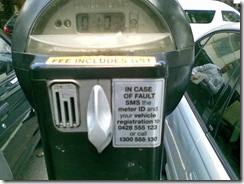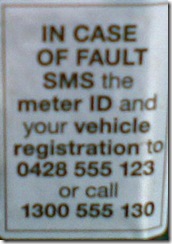I decided to take the train to Global Messaging 2008 in Cannes,France. Last year I did it overnight which was sort of fun. This year I'm heading down during the day and seeing whether it's possible to do a days work while I spend the day travelling.
So armed with a my Sony Vaio, Vodafone USB Modem and BlackBerry I attempted to spend the day travelling but so that no one would notice.
3 trains required (if you ignore 2 stop on the RER in Paris):
- Nottingham to London St Pancras
- London St Pancras to Paris Gare de Lyon
- Paris Gare de Lyon to Cannes
Nottingham to London - East Midlands Trains
This first leg is well known to me. I was able to use the power point to keep my laptop battery topped up but no WiFi and mobile coverage is shocking as usual. I've pretty much got used to not being able to do anything connected while on the train to/from London. That said my BlackBerry does an excellent job of exchanging emails when coverage allows.
Same goes for voice calls. Pointless trying to have a conversation.
It's always perplexed me as to why the mobile network operators have not invested in coverage for train lines. Little sardine cans of punters desperate to be communicate or consume content because there's nothing else to do.
conclusion: 3/10 great to have power, connectivity shocking
London to Paris - Eurostar
Aarrgh no power. Luckily I've invested in another battery for my laptop as the spare battery that came with my now 2 year old Vaio couldn't make it to Paris (the original battery gave up long ago). I guess though that a lot people's laptops will survive the 2hr journey so this shouldn't be too much of a hindrance.
I remember when Eurostar first opened and the trains seemed so glamorous, now they just seem tired and sadly lacking in basic facilities. Power points being one.
If they are trying to provide a business service then power is a must and I think WiFi would be a key asset. GNER (now National Express) seem to have done a great job on the East Coast Line, why not a premium route like London - Paris.
However this was when the Vodafone modem came to the fore, especially on the French side. I got 3G coverage almost all the way from Calais to Paris. I actually managed to use some web applications. Properly review some emails, respond completely. It was like being at my desk at home.
Voice calls no problem.
conclusion: 7/10 connectivity pretty good though WiFi would be beter, could really do with power
Paris to Cannes
This was going to be the real test. The first 2 legs are less than or about the 2 hour mark. If all else failed you could probably catch up with things at a coffee shop at one of the stations. 5 hours of whizzing through the French countryside was really going to put this experiment to the test, and it did.
I had high hopes for this train trip. The French being well known for their super fast train service, tearing round the country brimming with socialist pride. I imagined it would be well setup for the travelling business person.
I booked way ahead so travelled first class and was greeted by a nice big seat on the top deck (thought that might be better for mobile coverage) with my own power point.
No WiFi again, but as we left Paris I was hopeful as 3G coverage remained but this soon gave way to 2G, which in turn gave way to very patchy indeed. For large chunks of the journey it was unworkable. Especially as it seemed to stop connecting automatically, maybe that's a roaming setting.
Voice calls were also tricky, especially given they seem to be frowned upon in the carriage. Nothing like a mobile phone etiquette faux-pas in a foreign country to endear yourself with your fellow passengers.
conclusion: 6/10 power and seat great, data coverage varied
So is it workable? Certainly Eurostar, though more on the French side than the British. Given they've shortened that bit recently, I guess it's less of a problem ;-). The key at the moment is to know your route and know how to work round it's foibles.
Having used the WiFi on the East Coast (London to Edinburgh) line it's difficult to understand why other rail operators aren't putting it in across their fleet. You look in any rail carriage these days and the number of laptops as just mushroomed. Couple that with WiFi capable phones and PDAs and there's an army of people that would be quite prepared to pay an additional charge for WiFi while they travel.
I might be getting a little carried away, but I wonder if the government has any view on the national productivity hit of having people stuck on trains, unable to access their work. Could a government subsidy drive adoption as well as our GDP?




